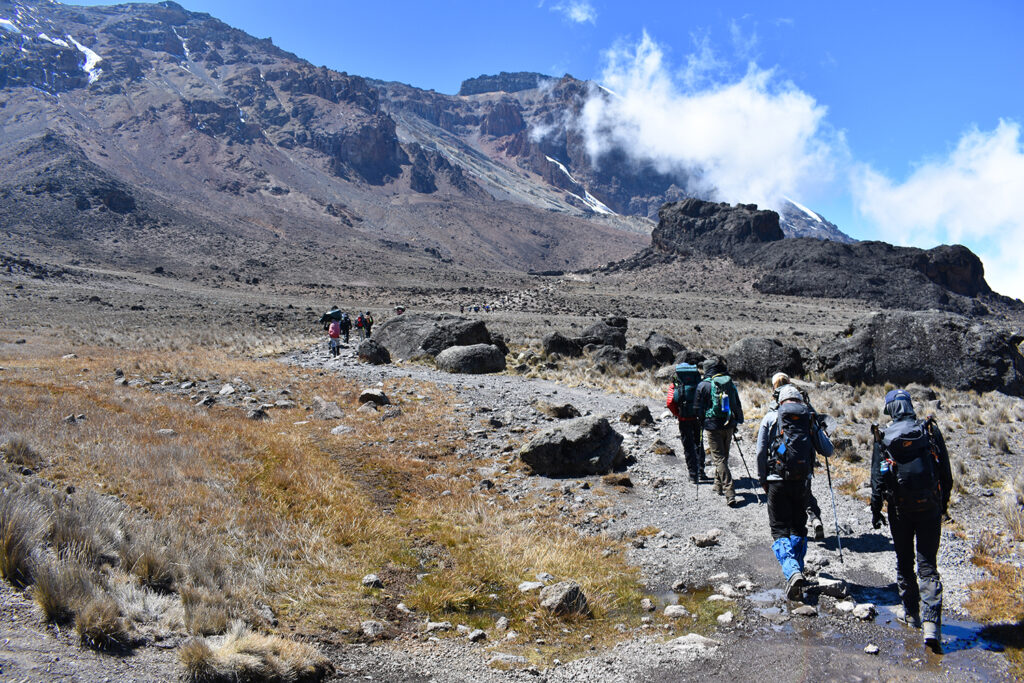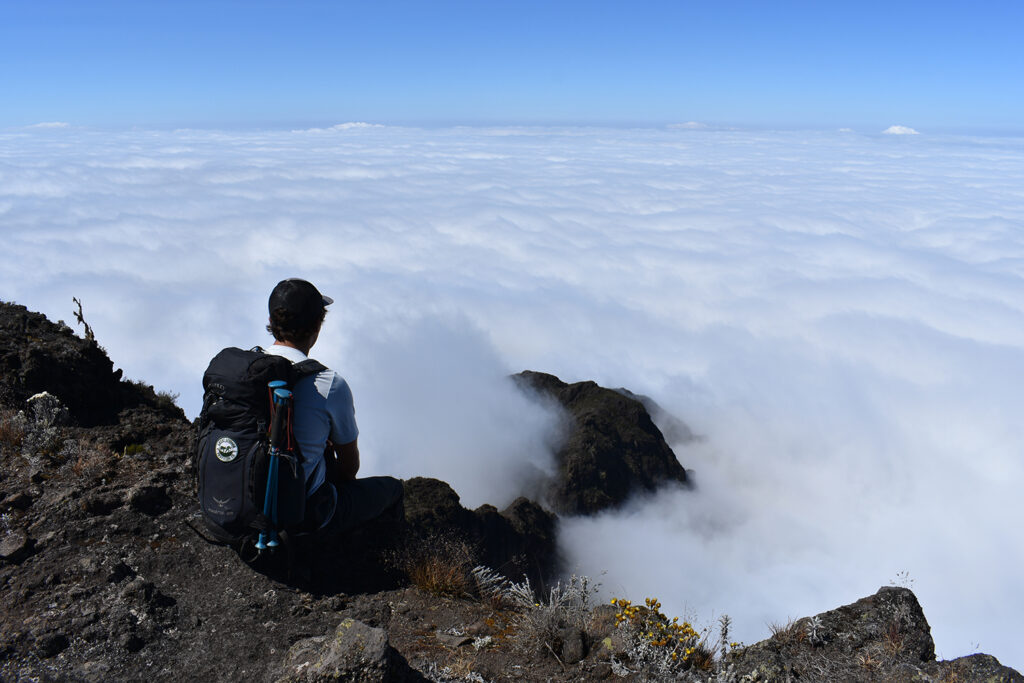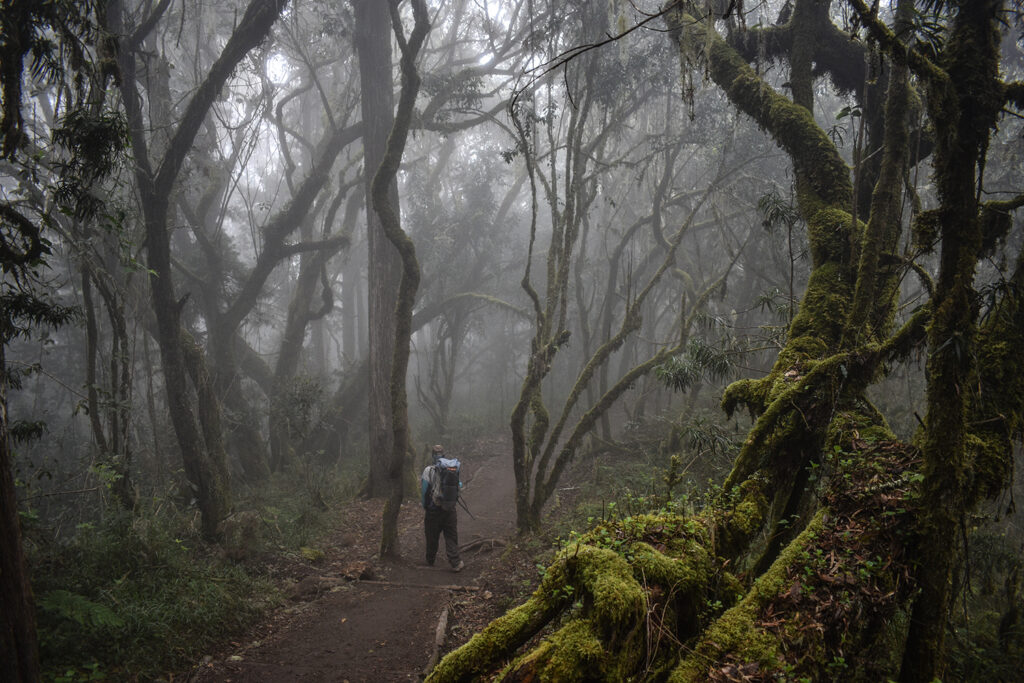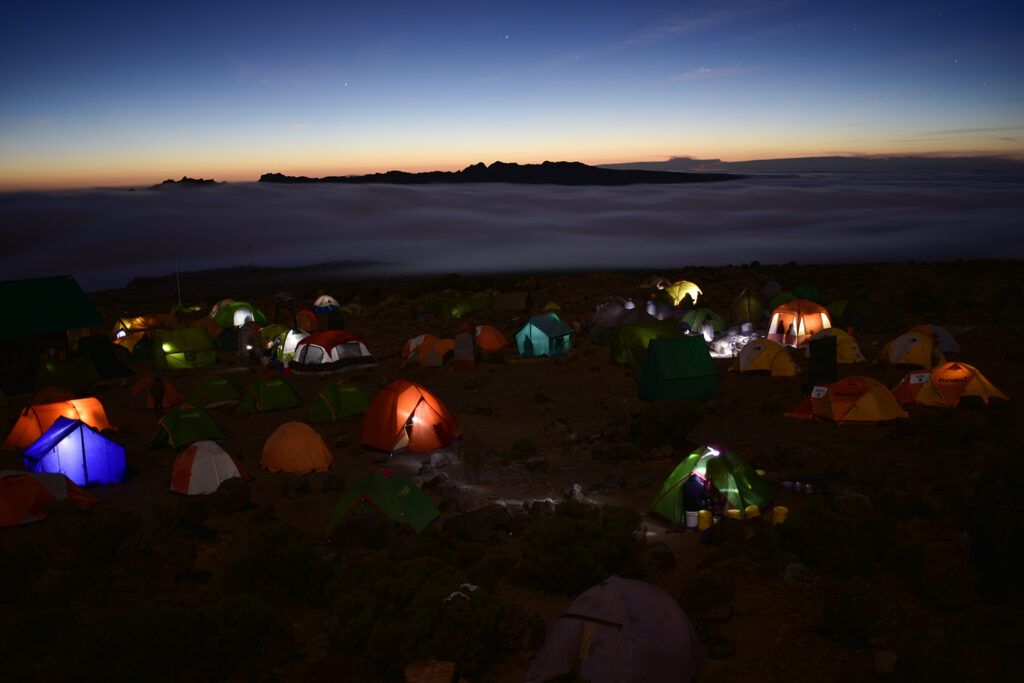By, Cole Cutter (GOPC Brand Ambassador)
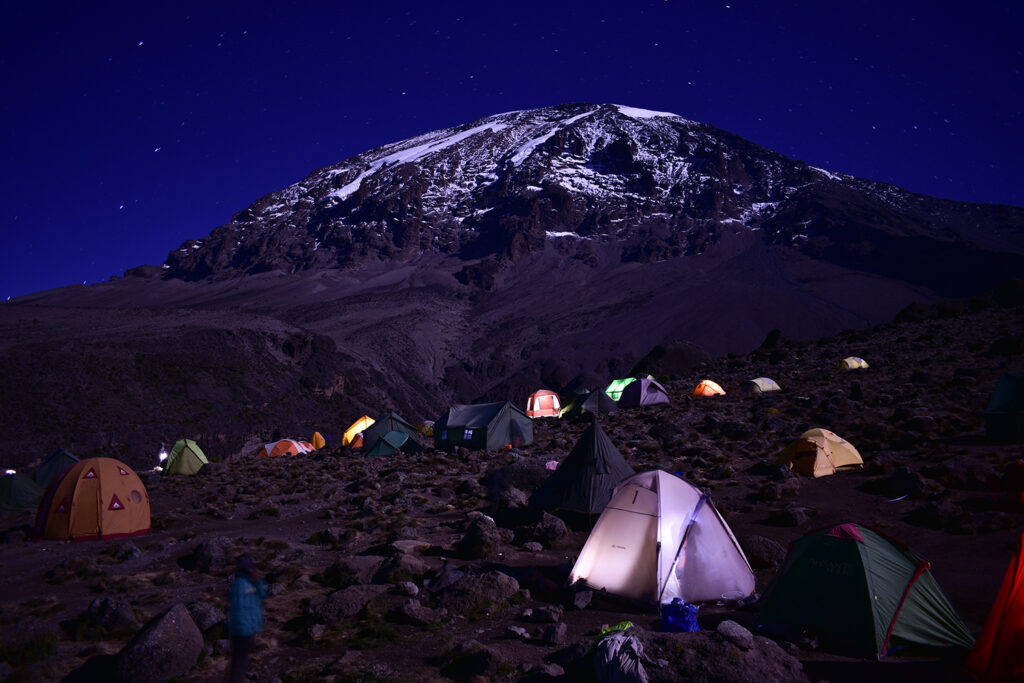
If Mount Kilimanjaro’s 19,341 ft summit is calling your name, you aren’t alone. Every year, thousands of mountaineers travel to East Africa in hopes of conquering the tallest freestanding mountain in the world. So what does it take to summit this beast? I’m here to help, having completed a successful 8 day climb via Kilimanjaro’s Lemosho Route.

Climbing Kili is a once in a lifetime opportunity, so it’s important to do some pre-climb “homework” to get things right. Tanzanian law requires all tourists to climb with a tour company. That means all prospective climbers inevitably find themselves comparing over 300 different tour companies that operate on Kilimanjaro. It’s an important decision because having quality guides, tasty food, and worthy gear makes a huge impact on your overall happiness. I settled on a mid-ranged outfitting company with outstanding reviews, Ahsante Tours, and I couldn’t have been happier. If you find yourself getting overwhelmed, guide books like Henry Stedman’s Kilimanjaro do an awesome job of simplifying your decision.
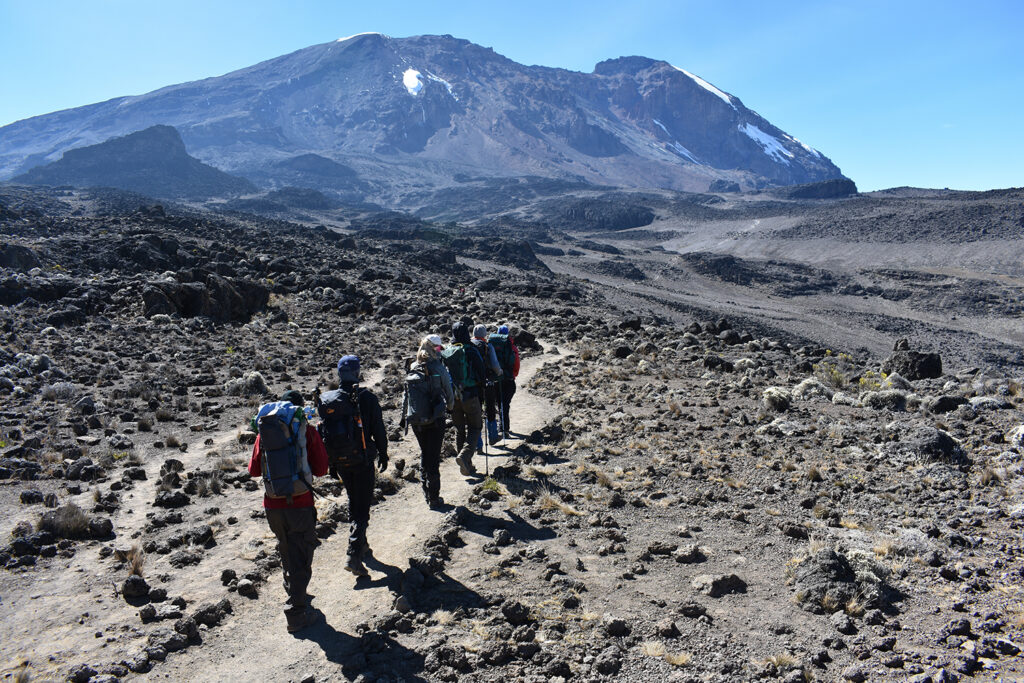
Climate Zones and Packing
Once you’ve booked your trip, the excitement ramps up when you start organizing your packing list. Unlike most mountains, Kili has 5 distinct climate zones so you’ll be packing for almost every climate imaginable. Below is a description of each climate zone, so you’ll have a good idea of what to expect.
Zone 1 – (2,600 – 9,200 ft): A lush rainforest with thick vegetation and monkeys swinging from the vines above.
Zone 2 – (9,200 – 11,000 ft): As you climb out of the misty jungle, you enter the more sparse Heath Zone, where lichen and moss hang from the head high trees. In the Heath, you pass through the last major layer of clouds as you journey towards the 3rd climate zone.
Zone 3 – (11,000 – 13,200 ft): The Moreland, is where the temperature cools and vegetation begins to dwindle. Here, you’ll encounter the alien looking Giant Groundsels that have become a Kilimanjaro signature.
Zone 4 – (13,200 – 16,000 ft): Above all the vegetation, the cold and rocky landscape of the Alpine Desert make up the 4th climate zone. You’ll really feel like you’re on Mars here.
Zone 5 – (16,000 ft+): Finally, the massive glaciers and sub-zero temperatures near the summit make up the 5th climate zone, The Arctic.
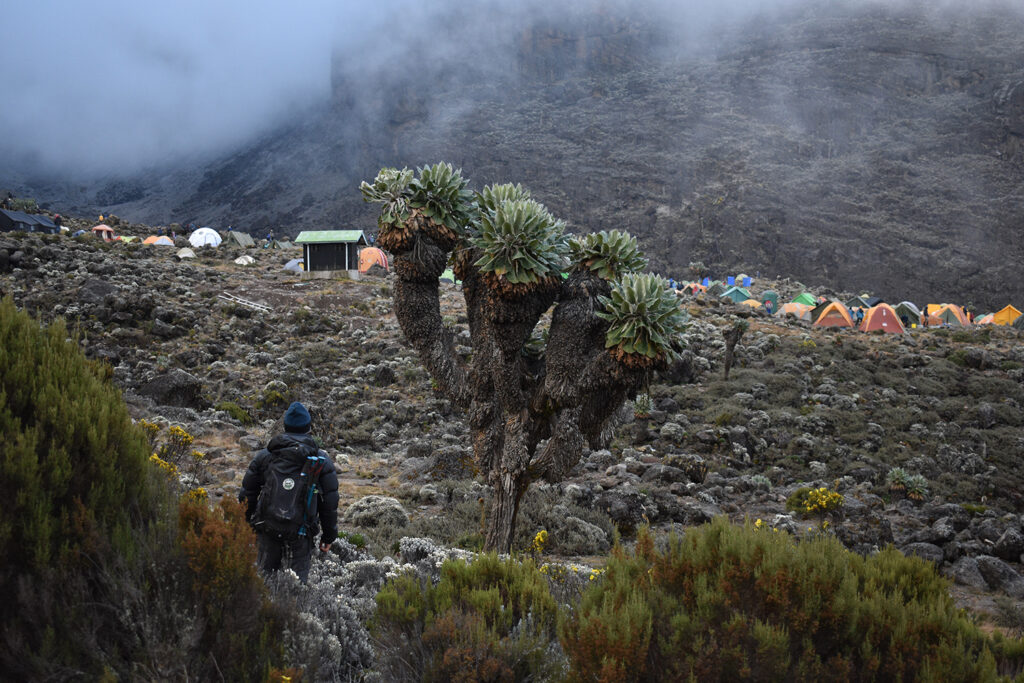
(Pictured above is a Giant Groundsel in the Moreland)
Packing List
Being prepared for each zone is key, so I’ve listed my ultimate packing list that helped me summit successfully.
*Available at your local GOPC!
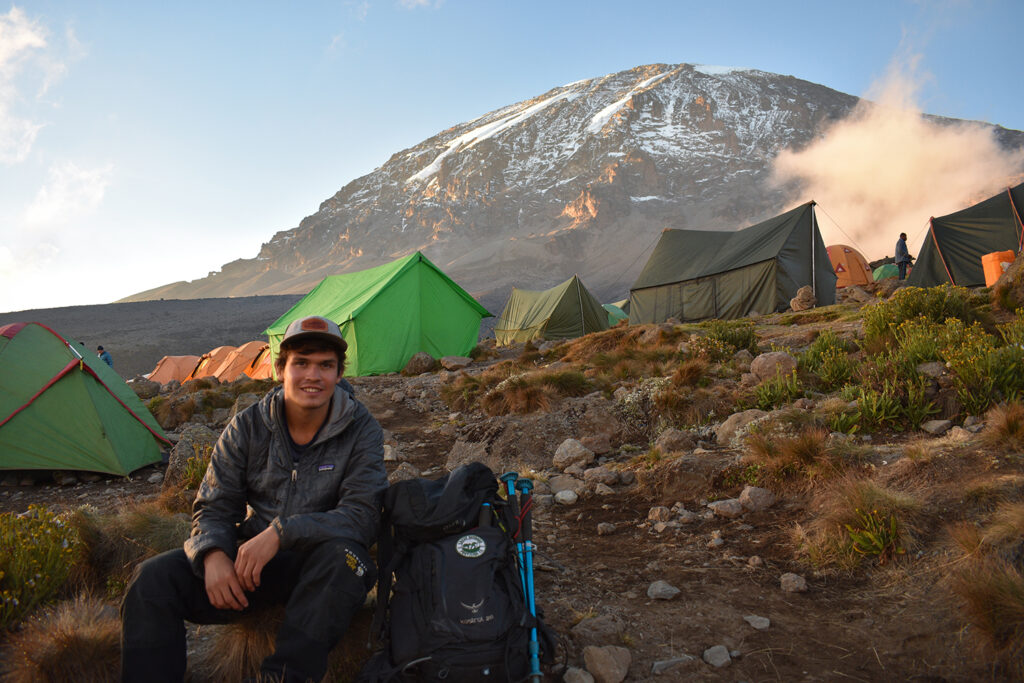
Shirts and Jackets
North Face Vapor Wick T-shirts (4)*
-Sweat wicking shirts for hotter zones and base layers in colder climates
Long sleeve T-Shirts (2)*
Patagonia Nano Puff Jacket*
-Worn on every day of the climb
700+ Fill Down Jacket*
-Thick insulating jacket for cold nights and bone chilling temperatures above 16,000ft
Gore-Tex Shell Jacket*
-Heavy duty shell for intense protection against wind and rain
Pants
Patagonia Men’s CapiLene Midweight Bottoms (3)*
-Essential base layer
Patagonia Men’s Baggies Shorts*
-Great for warm, humid Rainforest
Kühl Renegade Pants (3 pairs)*
-Lightweight, breathable pants perfect for the Moorland and Alpine Desert
Gore Technical Windproof Pants
-Heavy duty pants used for freezing temperatures near summit
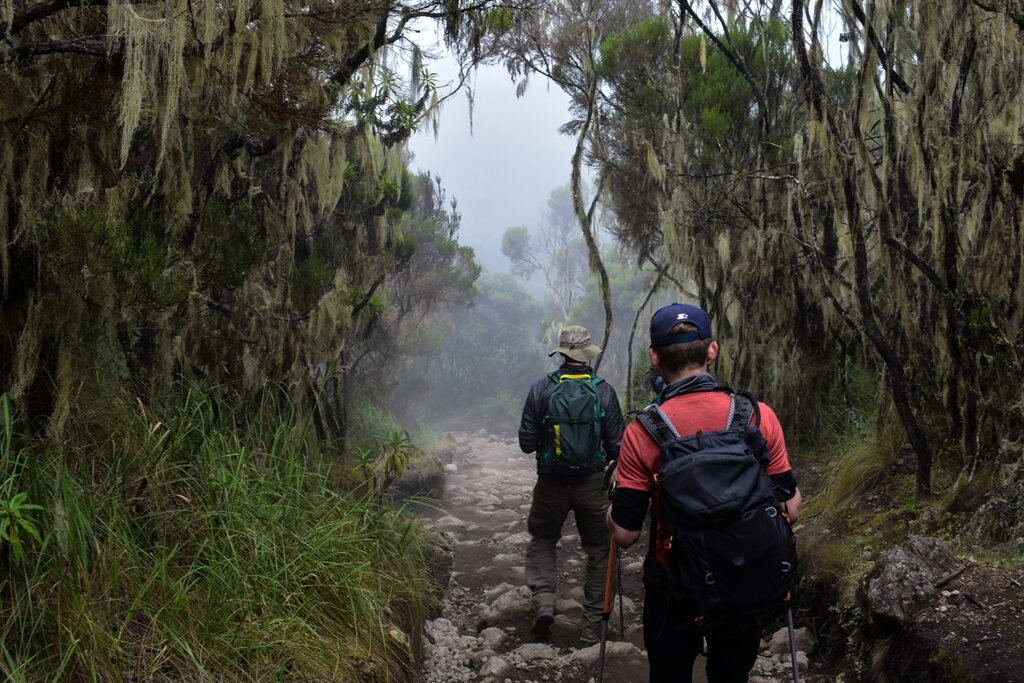
Footwear
Smartwool Outdoor Heavy Crew Socks (6 pairs)*
-Fresh pairs of high quality socks make a HUGE difference
GoreTex Lined Backpacking Boots*
Gaiters*
-Super helpful in blocking the dusty trail on the drier parts of the mountain
Other Essentials
Petzl Tikka Headlamp (200 Lumens)*
-Spare no expense here as hiking through the night is common for many summit pushes
Osprey Hydraulics Reservoir (3L)*
Platypus softbottle (1L)*
Strong Sunscreen and Chapstick*
-At high-altitudes the sun can easily burn skin in just a few minutes of exposure
Wide-Brimmed, Full Coverage Hat*
Power Bank and Camera
-Kilimanjaro is undoubtedly one of the most beautiful landscapes in the world
Guide Book
-Kilimanjaro: The Trekking Guide to Africa’s Highest Mountain by Henry Stedman
Polarized Sunglasses*
-The majority of this climb is in the sun above the tree line
Trekking Poles *
-Especially useful for loose volcanic scree
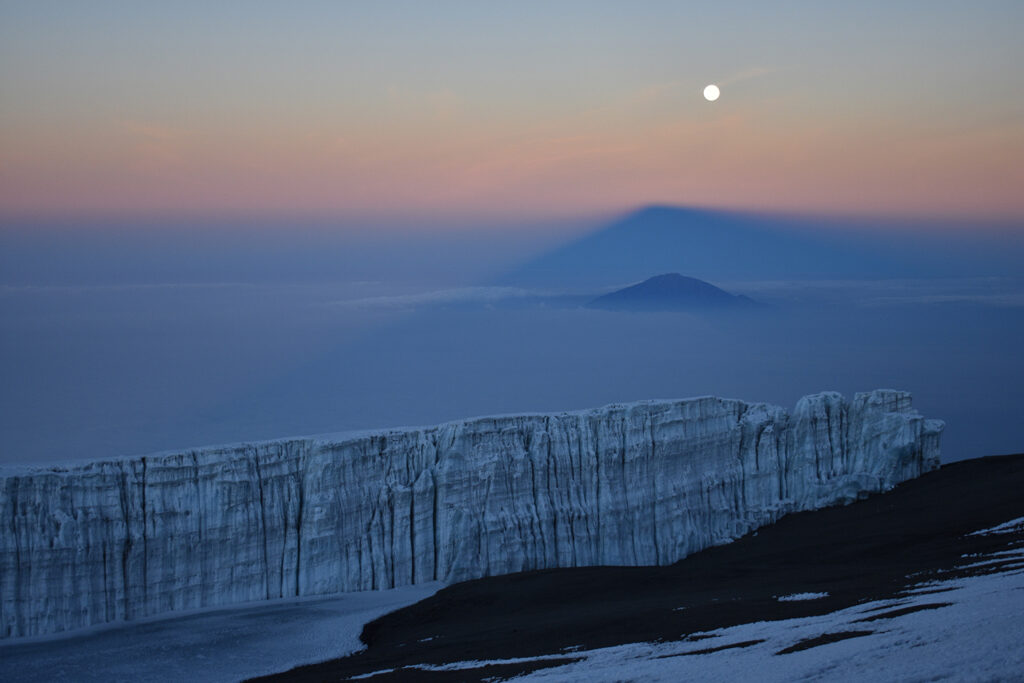
What I Didn’t Expect
Intense Cold
I’ve never felt such intense cold as I felt during our 7 hour, overnight summit push. By the time the sun came up on the summit, our camera batteries had frozen and our Camelbak hoses were rock solid from ice. There also wasn’t even enough oxygen for our hand warming packets to heat up. Pack accordingly!
Altitude and Appetite
You would expect to work up a serious appetite from hiking 6 hours a day. In reality, our group practically had to force ourselves to eat during the climb. Don’t get me wrong, the food was delicious, but the altitude completely killed our appetite. A steady supply of energy is important though, so keep eating.
Charming Locals
From beginning to end, every interaction with the locals was a joy. Everyone from our local climbing company was a blast to be around, both on the mountain and afterwards when we met up for drinks. They even baked me a birthday cake on the mountain!
